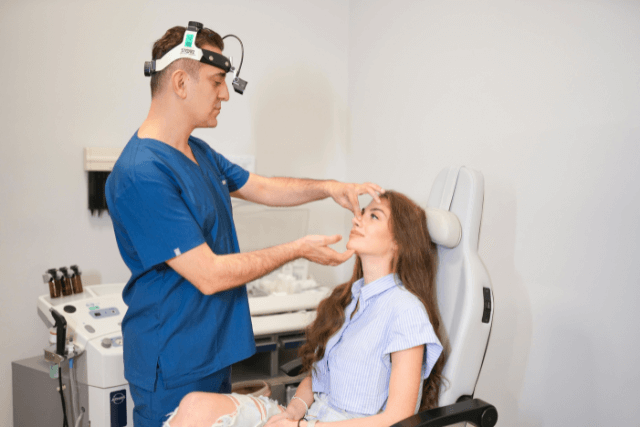Gallbladder removal surgery, medically known as cholecystectomy, is a common procedure performed to address various gallbladder-related issues. In Tampa, as in many parts of the world, this surgery is often necessary when conservative treatments fail to alleviate symptoms or when complications arise. Understanding the reasons behind gallbladder removal can help patients make informed decisions about their health.
Understanding the Gallbladder and Its Function
The gallbladder is a small, pear-shaped organ located beneath the liver. Its primary function is to store and concentrate bile, a digestive fluid produced by the liver. When you eat, especially fatty foods, the gallbladder releases bile into the small intestine to aid in digestion. While the gallbladder plays a role in digestion, it is not essential for survival. The liver continues to produce bile, which then drips directly into the intestines, even after the gallbladder is removed.
Common Reasons for Gallbladder Removal Surgery
Gallstones (Cholelithiasis)
Gallstones are hardened deposits of bile that can form in the gallbladder. While many people with gallstones experience no symptoms, some may develop:
- Pain: Severe pain in the upper abdomen, often after eating fatty meals.
- Nausea and Vomiting: Especially after consuming rich or greasy foods.
- Jaundice: Yellowing of the skin or eyes, indicating a blockage in the bile ducts.
When these symptoms occur, gallbladder removal surgery may be necessary to prevent further complications.
Cholecystitis (Inflammation of the Gallbladder)
Cholecystitis is often caused by gallstones blocking the normal flow of bile. This blockage leads to inflammation, resulting in:
- Severe Abdominal Pain: Particularly in the upper right side.
- Fever: Indicating an infection.
- Nausea and Vomiting: Persistent and often severe.
If left untreated, cholecystitis can lead to serious complications, including gallbladder rupture. In such cases, gallbladder removal surgery becomes essential.
Choledocholithiasis (Gallstones in the Bile Ducts)
When gallstones migrate from the gallbladder into the bile ducts, they can obstruct bile flow, leading to:
- Jaundice: Yellowing of the skin and eyes.
- Dark Urine and Pale Stools: Signs of bile flow obstruction.
- Pancreatitis: Inflammation of the pancreas, causing severe abdominal pain.
Surgical intervention is often required to remove these stones and prevent further complications.
Gallbladder Polyps
Polyps are growths that protrude from the gallbladder lining. While most are benign, certain types, especially those larger than 1 cm, have a higher risk of becoming cancerous. In such cases, removal of the gallbladder is recommended to eliminate the risk of gallbladder cancer.
Gallbladder Cancer
Although rare, gallbladder cancer is a serious condition that often presents with symptoms similar to other gallbladder diseases. Because gallbladder cancer is aggressive and hard to detect early, doctors typically choose gallbladder removal surgery as the treatment.
Symptoms Indicating the Need for Gallbladder Removal Surgery
Patients experiencing the following symptoms should consult a healthcare provider to determine if gallbladder removal surgery is necessary:
- Frequent Abdominal Pain: Especially after eating fatty foods.
- Nausea and Vomiting: Persistent and unexplained.
- Jaundice: Yellowing of the skin or eyes.
- Fever: Accompanied by abdominal pain.
- Indigestion: Particularly after meals.
Early consultation can lead to timely intervention and prevent potential complications.
Gallbladder Removal Surgery: What to Expect
Preoperative Preparations
Before surgery, patients undergo several evaluations, including:
- Blood Tests: To assess overall health and liver function.
- Imaging Studies: Such as ultrasound or CT scans to visualize the gallbladder and bile ducts.
- Medical History Review: To identify any underlying conditions that may affect surgery.
Doctors also advise patients to fast for several hours before the procedure and to adjust or stop certain medications as needed.
Surgical Procedures
There are two primary methods for gallbladder removal:
- Laparoscopic Cholecystectomy: Involves small incisions and the use of a camera to guide the surgeon. This minimally invasive approach typically results in shorter recovery times and less postoperative pain.
- Open Cholecystectomy: A larger incision is made to access the gallbladder. This method may be necessary if complications arise or if the gallbladder is severely diseased.
Postoperative Care
After surgery, patients are monitored for any immediate complications. Most individuals can return home the same day or the following day. It’s essential to follow the surgeon’s instructions regarding diet, activity levels, and wound care to ensure a smooth recovery.
Risks and Complications of Gallbladder Removal Surgery
While gallbladder removal surgery is generally safe, potential risks include:
- Infection: At the incision sites or internally.
- Bleeding: During or after surgery.
- Bile Leakage: From the bile ducts.
- Injury to Surrounding Organs: Such as the liver or intestines.
- Post-Cholecystectomy Syndrome: A condition where patients experience symptoms similar to those before surgery, including abdominal pain and indigestion.
It’s crucial to discuss these risks with a healthcare provider and weigh them against the potential benefits of the surgery.
Living Without a Gallbladder
After gallbladder removal, most individuals can lead a normal life. However, some may experience:
- Digestive Changes: Including diarrhea or bloating, especially after consuming fatty foods.
- Dietary Adjustments: Eating smaller, more frequent meals and avoiding high-fat foods can help manage symptoms.
It’s essential to follow the healthcare provider’s dietary recommendations to maintain digestive health.
Conclusion
Gallbladder removal surgery is often necessary to address various gallbladder-related issues that affect daily life. Understanding the reasons for the surgery, what to expect during the procedure, and how to manage post-operative care can help patients make informed decisions about their health. Consulting with a qualified healthcare provider is the first step in determining the best course of action for individual health needs.



